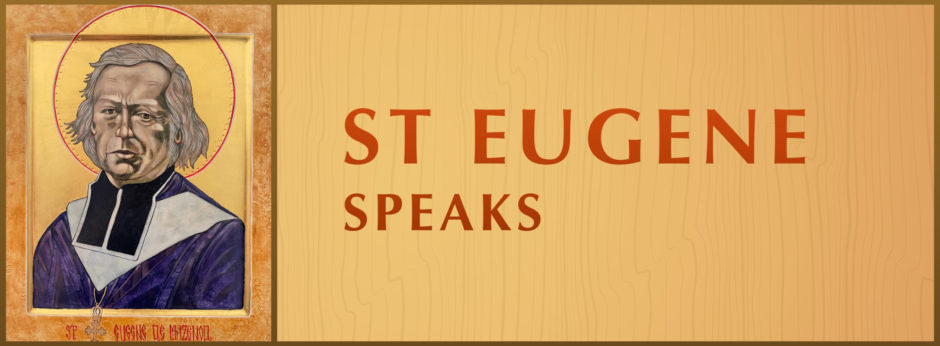For a population used to hard physical work, it was essential that the mission provide more than only sermons to listen to – the people had to be involved with their senses and their actions. One of the ways of doing this was through processions. Accompanied by an explanatory sermon, these actions became moments of learning and consolidation. As they walked in procession with other like-minded people, they experienced solidarity in the journey of their lives. The hymns they sang, the prayers they recited and the visual image that led the procession became teaching moments and opportunities for reflection. One of the processions was always focused on Mary. Eugene wrote,
The consecration to the Blessed Virgin is made when the procession held in honour of the Mother of God comes back; it is obligatory. It is made from the pulpit, before the Blessed Virgin’s statue, placed on a throne, as beautiful as the locality can provide.
Letter to Eugene Guigues, 5 November 1837, O.W. IX n. 652
The procession was meant to lead the people to make a personal and community act of commitment to following Mary’s Gospel example of discipleship as Christians, and of having Mary as intercessor and guide.
Sevrin describes the solemnity of the occasion:,
It was one of the most beautiful days. Well before the hour, an enormous crowd flocked to the church, and almost all were carrying candles. The high altar had become a gigantic altar of repose of the Virgin, flooded with light, decorated with greenery and flowers. After a song and a sermon, the girls dressed in white, crowned with flowers, lined up around the sanctuary and dedicated the parish to Mary. They then came two-by-two to leave their crowns at her feet. In some places they imitated the question-and-answer style of the renewal of vows; in others the faithful repeated the formula of this consecration after the missionary, and at the given signal raised their candles in the air. Around six thousand persons, in Arles, took part in the ceremony, almost all with a torch. There were often two different consecrations, the one for the adults and the other one for the children.
(Les missions I, p.230-231)
The recitation of the rosary and the teaching and spread of its use as a Gospel meditation prayer also formed part of the program of the missions.

Liturgy must be more than a “western” matter of the mind but must incorporate/in-body the depth of the reality before us/with in us.
We are called to be creative and responsive to the cultural milieu while alway remaining flexible. Daring Oblate Adaptability is not only about mission but also about liturgy.
Tell us what you are doing?